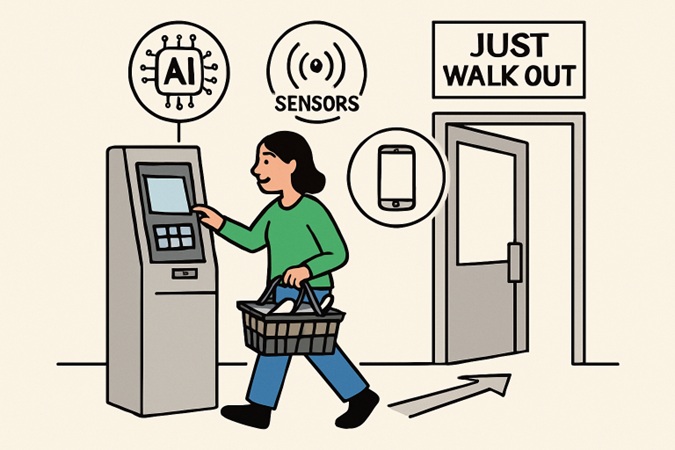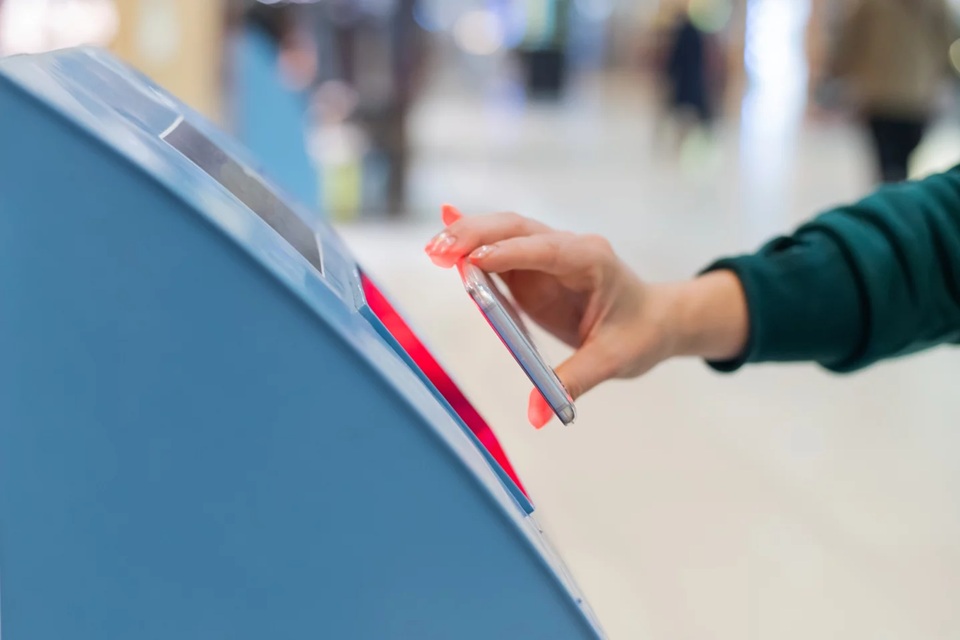Key Takeaways:
- Automated checkout systems enhance customer convenience and operational efficiency.
- Technologies like AI, computer vision, and IoT are central to the evolution of these systems.
- Retailers face challenges such as implementation costs and data privacy concerns.
- Future trends include the rise of cashierless stores and personalized shopping experiences.
Introduction
Shoppers today expect speed, convenience, and minimal friction at every stage of their buying journey, prompting retailers to rethink traditional checkout experiences. Long lines and slow service have become key pain points, often influencing where customers choose to shop. In response, businesses are turning to technology to meet these evolving expectations. Retailers are experiencing a pivotal shift as they incorporate automated checkout into stores, fundamentally changing how people shop. By integrating self-checkout kiosk solutions, leading brands streamline the checkout process, deliver faster service, and reduce labor costs. The demand for seamless interactions drives innovation as grocers, convenience stores, and big-box chains race to implement the latest technologies.
Fast-paced lifestyles and growing comfort with contactless services have intensified the need for sophisticated automated checkout systems. With retailers under pressure to meet heightened expectations, the role of solutions that minimize queues and errors is only increasing. The deployment of smart kiosks, mobile payment apps, and in-store sensors is transforming the notion of traditional checkout, setting new standards for convenience and operational efficiency.
Technological Advancements In Automated Checkout
Artificial intelligence and machine learning have led to explosive growth in smart retail infrastructure. Modern self-checkout systems are no longer just barcode scanners; they harness cutting-edge computer vision to recognize products, even those without physical packaging, and use interconnected IoT sensors to track inventory in real-time. Amazon’s Just Walk Out technology illustrates this trend, letting shoppers enter a store, select their items, and exit with their purchases automatically billed to their accounts. This streamlined approach leverages deep learning algorithms, shelf sensors, and overhead cameras for frictionless checkouts.
Beyond tech giants, forward-thinking retailers are piloting smart shopping carts embedded with cameras and weight sensors. These carts recognize products when placed inside, eliminating manual scanning and facilitating a hands-free shopping experience. This new breed of automated checkout reflects the increasing capability of AI to interpret real-world actions and deliver practical solutions in retail contexts.
The digital innovation is complemented by mobile device integration, allowing customers to scan items using smartphones and complete transactions through secure digital wallets. These omnichannel advancements empower consumers, offering the flexibility to shop and pay in the way that suits them best.

Benefits For Retailers & Consumers
Automated checkout technology benefits both consumers and store operators in substantial ways. For shoppers, one of the largest draws is the ability to bypass long lines, resulting in faster and more pleasant visits. The intuitive, self-guided interfaces mean fewer interruptions and a more autonomous experience. Redeploying workers from registers to high-impact roles like customer service or inventory replenishment boosts business effectiveness.
Additionally, these systems collect invaluable consumer data, tracking products selected, time spent in store areas, and checkout patterns. Retailers can analyze this information to optimize stocking, personalize special offers, and tailor marketing campaigns, yielding higher customer retention and driving sales performance. According to Reuters, data insights from automated checkout drive the next generation of customer-centric retail strategy.
Challenges & Considerations
The journey toward widespread adoption of automated checkout is not without obstacles. High upfront investment represents a significant consideration for retailers, especially small and medium-sized enterprises with limited resources. These expenses involve purchasing and installing hardware, integrating with existing store systems, and providing ongoing technical support.
Data privacy remains a primary concern, as automated systems often require personal data to function effectively. Ensuring robust cybersecurity and transparent data handling practices is critical to building consumer trust. Additionally, not all shoppers are ready to embrace automation; those less familiar or comfortable with technology may prefer engaging with traditional cashiers, requiring retailers to provide hybrid options and training for staff and customers.
There are also operational hurdles, including the potential for technology glitches that could disrupt the checkout experience and the need for constant software updates to maintain accuracy and efficiency. As The New York Times highlighted, successful self-checkout deployment requires ongoing oversight to ensure reliability and user satisfaction.
Future Trends In Automated Checkout
Cashierless stores are expected to proliferate, with more retailers emulating trailblazers like Amazon Go and introducing sensor-rich environments. The next phase will see further sophistication, including facial recognition and biometric authentication, to enable ultra-fast, personalized checkouts that adapt quickly to each shopper’s habits.
Enhanced mobile integration is poised to redefine checkout norms, allowing consumers to use their devices to shop and receive context-aware promotions and guidance throughout their visit. AI-powered personalization, driven by big data analytics, will deliver bespoke recommendations and dynamic pricing based on individual preferences and seasonal trends.
As competition grows and technologies mature, collaboration between retailers, technology vendors, and regulators will play a crucial role in setting standards for privacy, accessibility, and fairness in automated retail.
Conclusion
Automated retail checkout systems transform the shopping experience by blending speed, accuracy, and convenience with tailored interactions. These systems minimize wait times, reduce human error, and create a smoother transaction process, allowing customers to enjoy a more seamless visit. Leveraging AI, IoT, and computer vision advancements, retailers can gather real-time data on purchasing habits, enabling personalized recommendations, dynamic pricing, and targeted promotions that enhance engagement. Beyond efficiency, the technology fosters a sense of connection, as shoppers feel their needs are anticipated and addressed. However, successful adoption requires addressing challenges such as system integration, cybersecurity, and customer accessibility. Retailers who embrace these innovations thoughtfully can improve operational efficiency, boost customer loyalty, and position themselves ahead of competitors in an evolving, tech-driven marketplace.






Leave a Reply